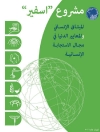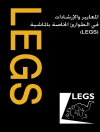As disputes concerning the environment, the economy, and pandemics occupy public debate, we need to learn to navigate matters of public concern when facts are in doubt and expertise is contested.
Controversy Mapping is the first book to introduce readers to the observation and representation of contested issues on digital media. Drawing on actor-network theory and digital methods, Venturini and Munk outline the conceptual underpinnings and the many tools and techniques of controversy mapping. They review its history in science and technology studies, discuss its methodological potential, and unfold its political implications. Through a range of cases and examples, they demonstrate how to chart actors and issues using digital fieldwork and computational techniques. A preface by Richard Rogers and an interview with Bruno Latour are also included.
A crucial field guide and hands-on companion for the digital age, Controversy Mapping is an indispensable resource for students and scholars of media and communication, as well as activists, journalists, citizens, and decision makers.
Innehållsförteckning
Acknowledgements
Preface: The politics of association on display (by Richard Rogers)
Introduction
FEATURES OF CONTROVERSIAL LANDSCAPES
1. Why map controversies?
2. A proliferation of issues
3. Making room for more actors
TOOLS OF SOCIAL CARTOGRAPHY
4. Exploring controversies as actor-networks
5. Exploring controversies with digital methods
6. Collecting and curating digital records
7. Visual network analysis
POLITICS OF MAPMAKING
8. Representing controversies
9. Mapmaking as a form of intervention
Controversy mapping in the shadow of Gaia
A conversation with Bruno Latour
References
Index
Om författaren
Tommaso Venturini is a researcher at the CNRS Center for Internet and Society, and co-founder of the Public Data Lab and of the médialab of Sciences Po.
Anders Kristian Munk is Director of the Techno-Anthropology Lab at the University of Aalborg and co-founder of the Public Data Lab.












